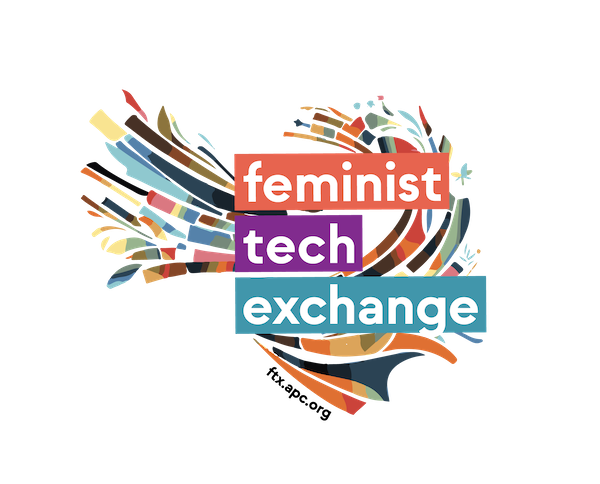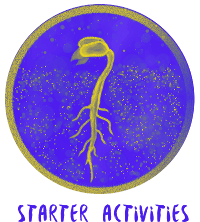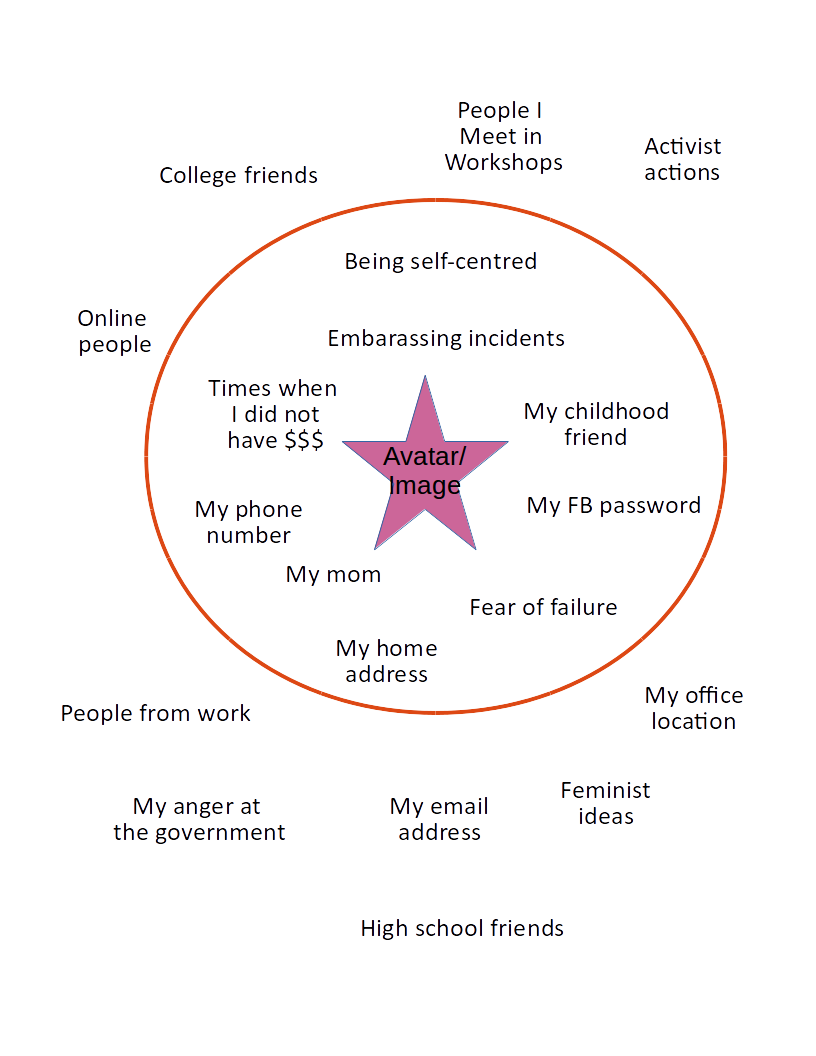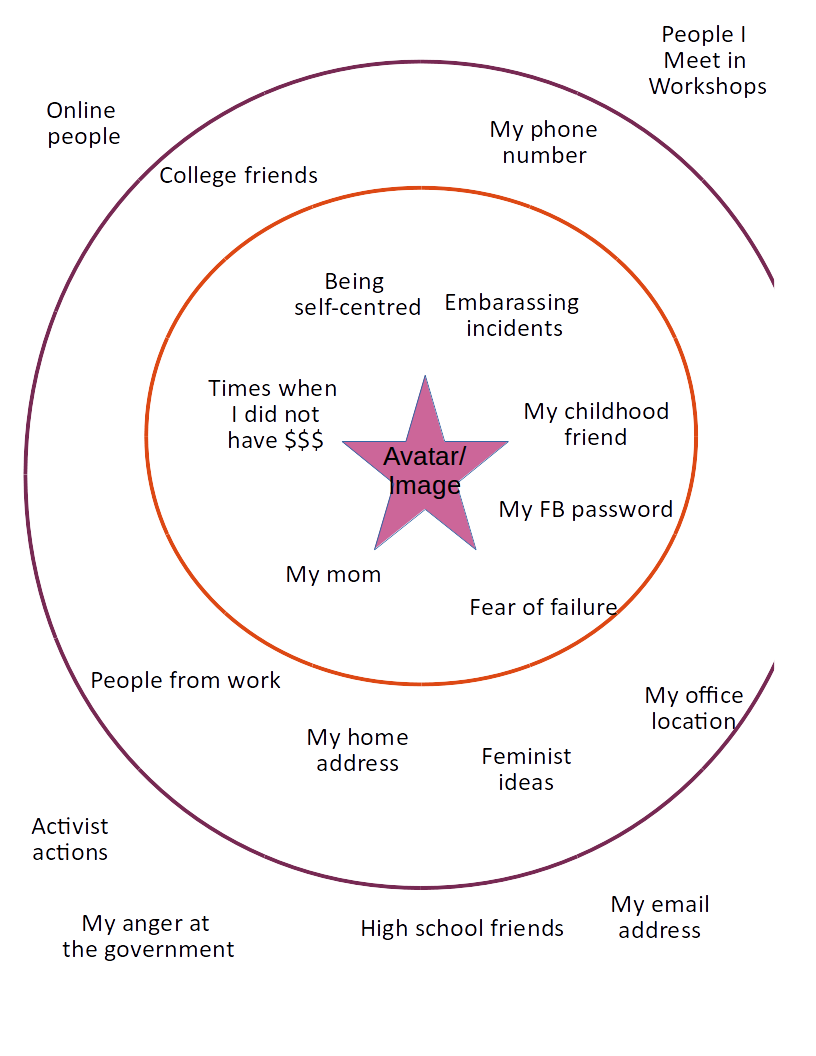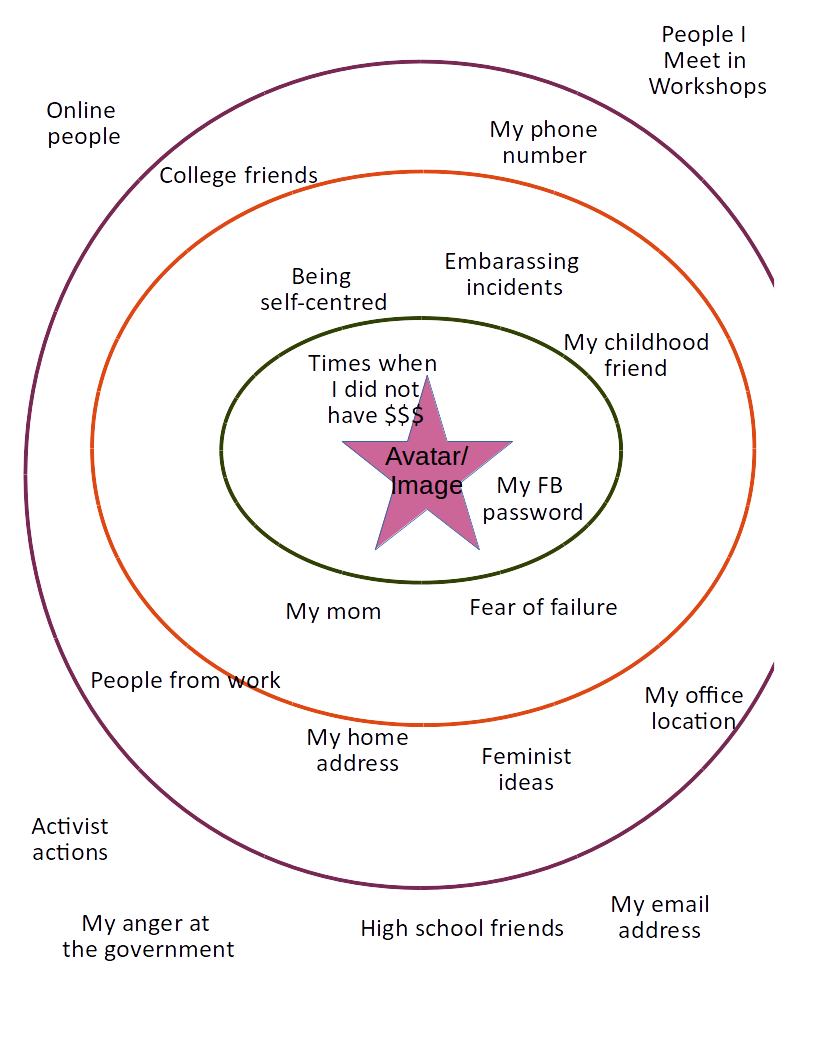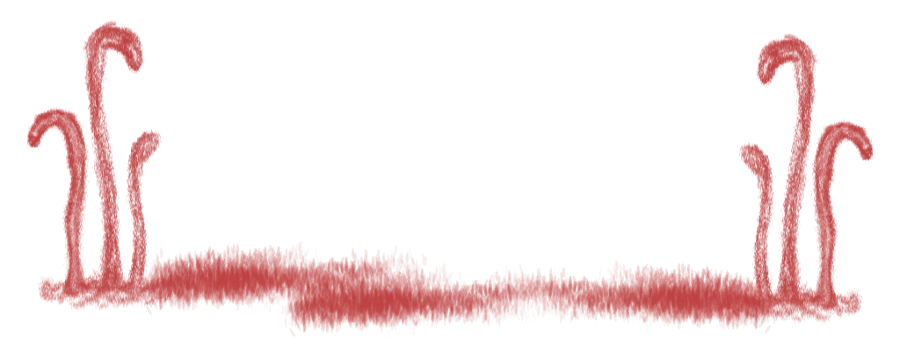The Bubble - Visualisation Exercise [Starter Activity]
This is a visualising exercise. The purpose of this exercise is to facilitate discussion about privacy and for the trainer and participants to understand varying concerns about privacy in the room.
This activity is not meant to deepen awareness of privacy, but rather have the participants reflecting on their individual notions of privacy.
This activity should be paired with either either Making Online Spaces Safer or or Input + Discussion: Privacy, Consent and Safety.
Learning objectives this activity responds to
- Develop an understanding of privacy issues, and how privacy affects women and their lives.
Who is this activity for?
This activity can be used with participants with different levels of experience with privacy issues online and offline.
Time required
This activity will require about about 40 minutes.
Resources needed for this activity
- Flip chart paper
- Markers
- Small-sized post it notes
Mechanics
This is a visualising exercise. Participants will be given flip chart paper and markers to draw.
Individual visualisation:visualisation - 30 minutes
If your are comfortable, close your eyes. Imagine a dot of bright light. Is it still, is it moving? How does it move? Now, imagine a circle around this dot. And now imagine both are moving, and the dot remains in the circle the whole time. You are both yourself, the dot, and your boundaries, the circle. How does it feel to be in this? This is a visualization of you inside of boundaries that are safe for you.
First, ask participants to draw an avatar of themselves in a circle in the centre of the paper.
The circle represents their individual bubble of privacy.
There are things inside and outside of the bubble.
On post-it notes, one concept per note, ask them to put the things that they keep most private and people they share the most private things with inside their bubble, and to place things they consider public outside of their bubble.
These things could include:
- people that they share things with
- information about themselves
- feelings that they have
- their activities
A sample of what this could look like:
After they do the first circle, ask them to draw another circle, and then re-arrange the post-its according the levels of sharing of information that they want to have among different people.
This could look like this:
The lastly, ask them to draw another circle, closer to their avatar and think about the things that they would never share with anyone, and put those in that circle.
Full Group Debrief:Debrief - 25 minutes
To process, ask the participants about the exercise and the reflections/insights that they had as they were drawing.
Ask them how they decided who was inside and outside their bubbles, and about the proximity of those outside the bubble to their bubbles.
Reflect on how their individual bubbles relate to creating safe spaces for themselves – online and offline.
Some guide questions for the debrief:
- How did each participant group the people and things inside and outside their bubbles?
- Was there a need to have more than 3 bubbles? Why?
- What were their insights around the responsibilities that they deal with, the emotions/feelings they have, and the things that they want to express? Was there a difference? Did their drawings show that difference?
- Have any of the participants ever experienced being forced to take a person/an emotion/an issue out of their bubbles? How did that happen? How did they deal with it? Were they able to put those things back in their bubbles?
- Of the things in your images, which things do you communicate about and which people do you communicate with in online spaces? Discuss.
Facilitation Note: Do not comment on the participants' bubbles and where their information/feelings/thoughts in. Do not encourage that kind of behaviour among the rest of the participants as well. Little things like gasping in surprise, raising an eyebrow, or laughing when some is sharing their bubble does not create a safe environment for the participants.
